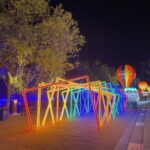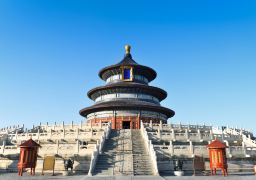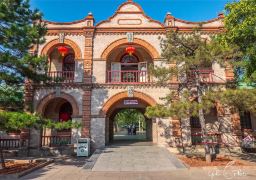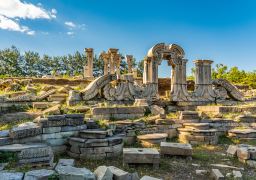The Beijing Tap Water Museum is located in the Qingshuiyuan community on Dongzhimen North Street, built on the site of the former engine room of the first water plant in the history of the capital, Dongzhimen Water Plant. It is the first technical museum dedicated to water supply in China. The exhibition hall currently has three exhibition areas: the first part, Hardship and Endeavor, Striving for Excellence; the second part, Clear Springs Reflecting Past and Present; and the third part, The Thriving Development after Reform and Opening Up.
In front of the museum’s entrance stands a seven-meter-high sculpture called ‘Source of Life,’ featuring three powerful, ancient Chinese dragons. The museum displays the history of human water use, basic knowledge of water, the preciousness of water resources, the concept that water is the source of life, the production process of tap water, key points of water supply technology, knowledge of water conservation, and the development process of China’s modern water supply industry. In addition to showcasing the history of Beijing’s tap water development, the exhibition also uses sound, light, electricity, and models to reflect the complex production process of tap water, the distribution of underground water networks, and strict water quality monitoring methods, allowing visitors to truly understand the value of ‘tap water does not come easily’ and ‘tap water is not self-coming,’ thereby enhancing the public’s awareness of water conservation and voluntary payment of water fees. Opening Hours: The museum is open from Wednesday to Sunday, 09:00-16:00; closed on Monday and Tuesday. Essential Tips: 1. Visitors with the following conditions are temporarily not allowed to enter: without a reservation; without carrying their valid ID card. 2. Visitors without a resident ID card must present their special documents (passport or Mainland Travel Permit for Hong Kong and Macao Residents) for information verification. 3. Intoxicated individuals, those improperly dressed, and those without or with limited behavioral capacity, unaccompanied by a guardian, are not allowed to enter. 4. Please consciously accept security checks upon entering to ensure your personal safety and the safety of the museum’s cultural relics. 5. Do not bring controlled weapons, lighters, flammable and explosive items, and other dangerous objects into the museum. Smoking is prohibited in all areas of the museum. 6. Personal bags can be stored at the luggage storage area, and valuables should be kept with you. 7. Please observe the visiting order during your visit, do not make loud noises, do not run, chase, climb, or lie down in the venue to avoid injuries, and take care of the elderly and children accompanying you. 8. Please care for public facilities and environmental sanitation. Do not climb, squeeze display cases, sculptures, and sand tables, touch exhibition walls and exhibit signs to prevent damage to exhibits and walls or personal injury. Maintain public health hygiene, do not eat in the exhibition hall, and prohibit spitting or littering. 9. The use of balance cars, skateboards, and other means of transportation is prohibited in the museum. Pets are not allowed.The museum has temporarily suspended manual guided services. Visitors are encouraged to use audio guides and QR code audio explanations.









